Brand mentions happen when people talk about your company online without necessarily linking to your website.
They’ve always happened on social media, forums, news sites, and blogs. But now they’re happening in AI responses—and these mentions influence how millions of people discover and perceive your brand.
Welcome to the new era of brand mention monitoring.
AI recommendations reach millions
People turn to AI to solve problems and to decide what to buy. If that AI recommends a competitor, you risk losing customers.
In July 2025, ChatGPT had more than 700 million weekly users around the world. If we focus just on users looking for how-to advice or products to buy, as stated by their usage report, that means brand recommendations could show up in conversations with at least 74.2 million people every week. 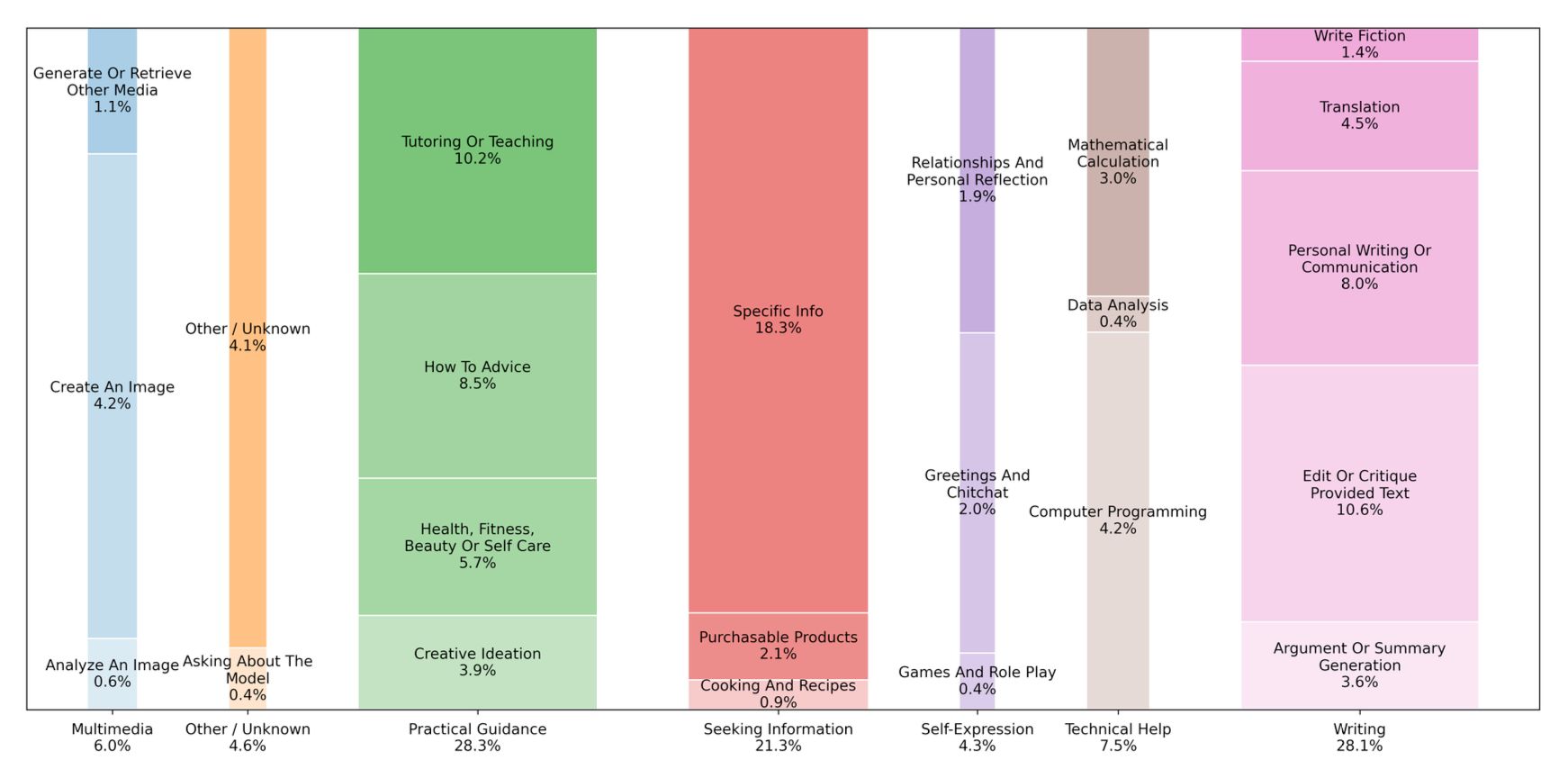
A brand mention doesn’t always mean someone asked directly for a specific brand or product recommendation. Brands can come up naturally, even when people are just asking for how-to advice.
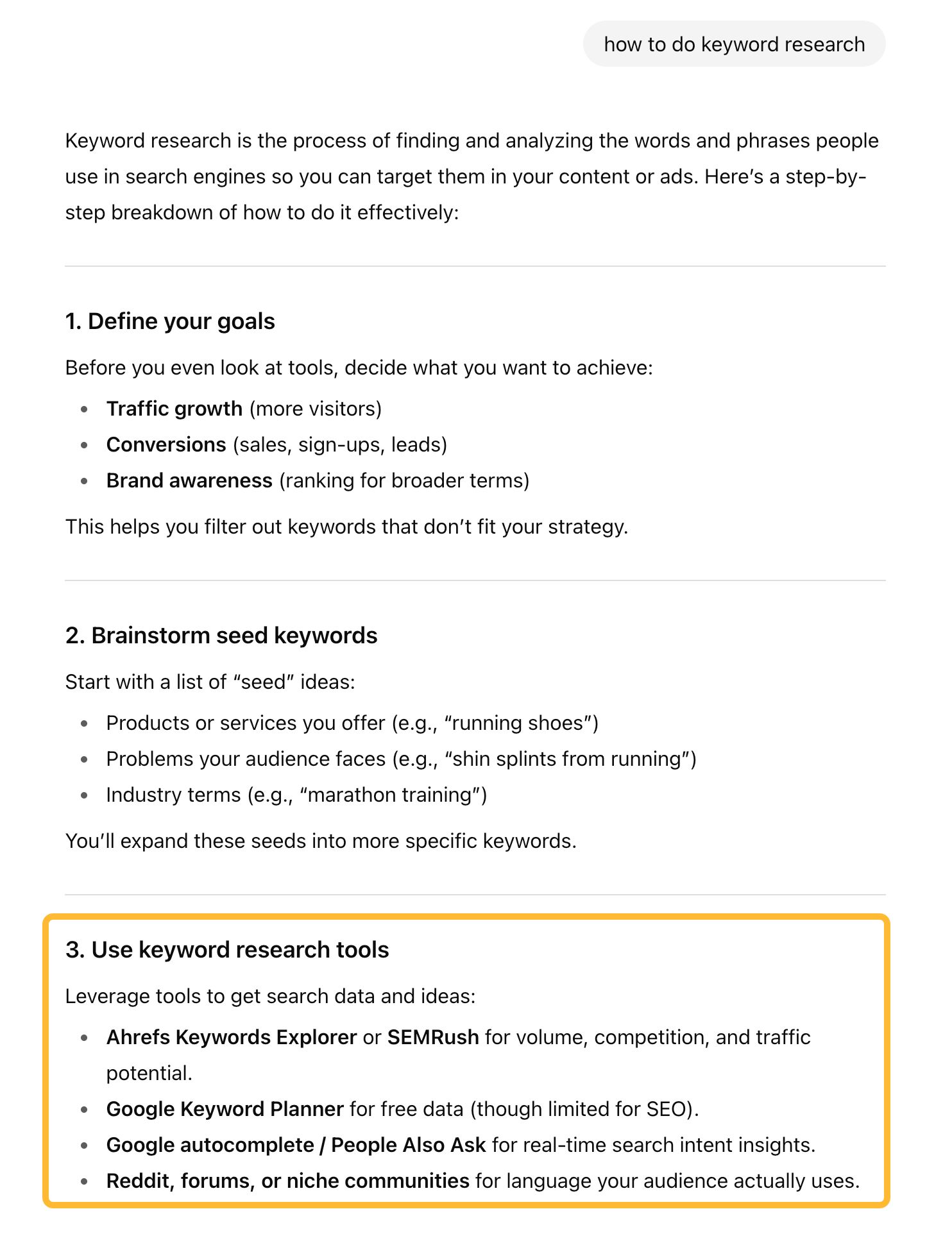
Nearly half of people trust AI recommendations
A study by the University of Melbourne has shown that nearly half of people trust AI. That half may be convinced by how the expert and tailored AI recommendations feel. Just share your requirements in a prompt, and the AI can scan dozens of sites to find the best option.
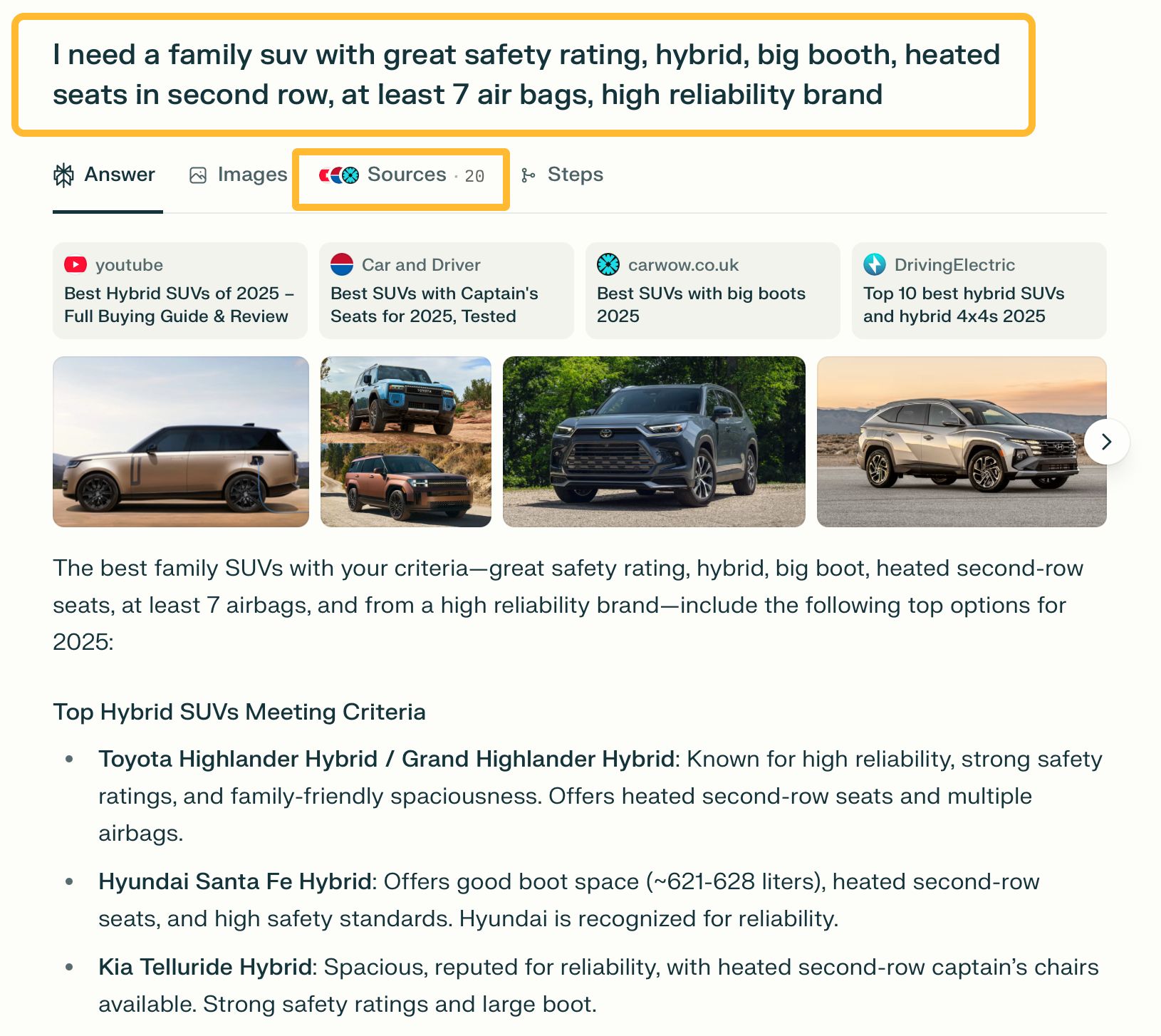
AI mentions stick around
Unlike social posts that fade quickly from feeds, brand mentions on the open web can have long-lasting effects. Your old content can stay indexed and searchable for years.
What’s different with AI is that these mentions don’t just live quietly online—they can shape how AI tools talk about your brand. That’s because models pull from both historical training data and fresh web searches. So a single mention today could keep resurfacing in answers months or even years from now.
For example, Perplexity has consistently highlighted Ahrefs as the top SEO software for more than two months straight, showing how repeated mentions can reinforce a brand’s position inside AI-generated responses.
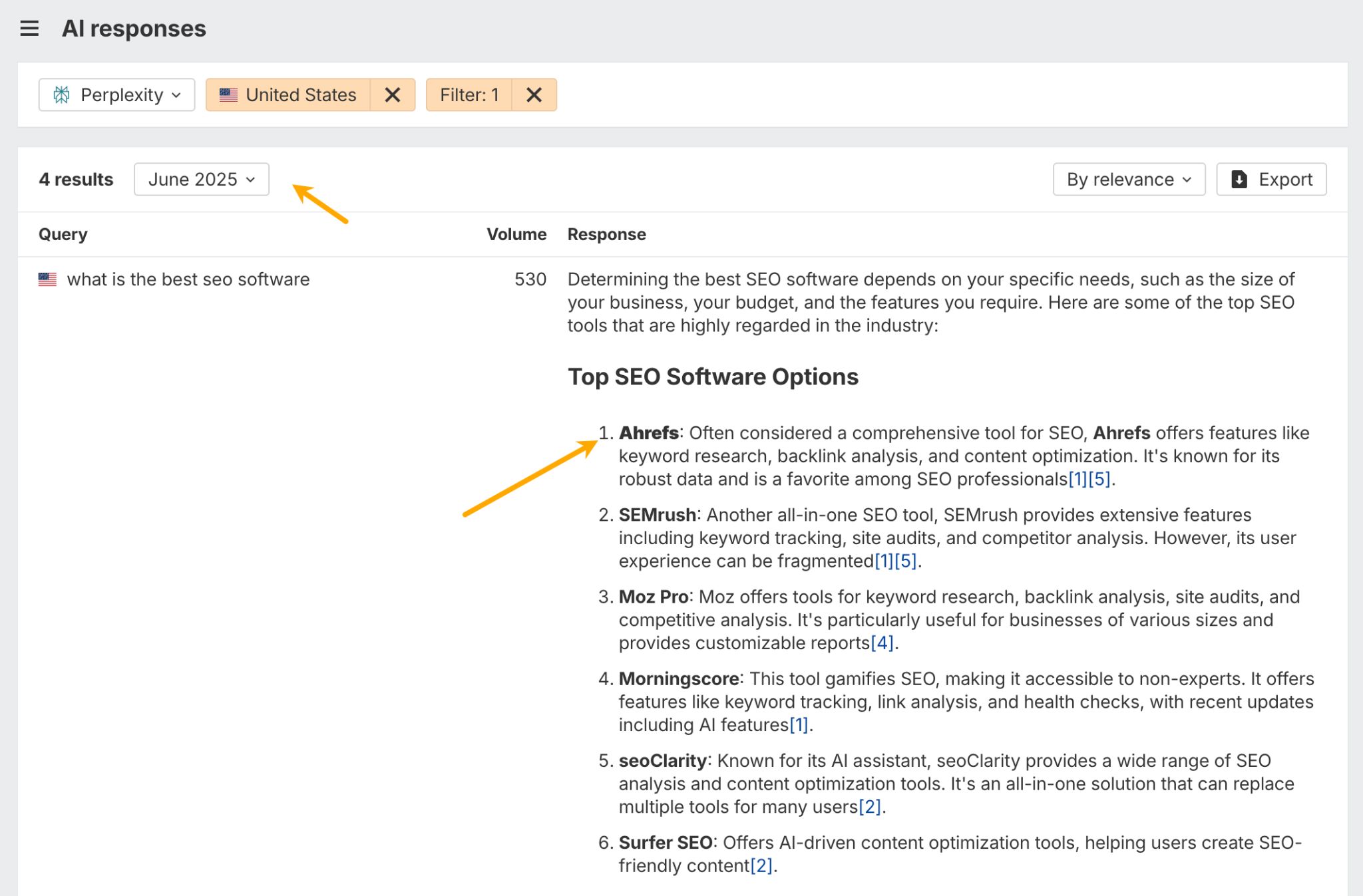
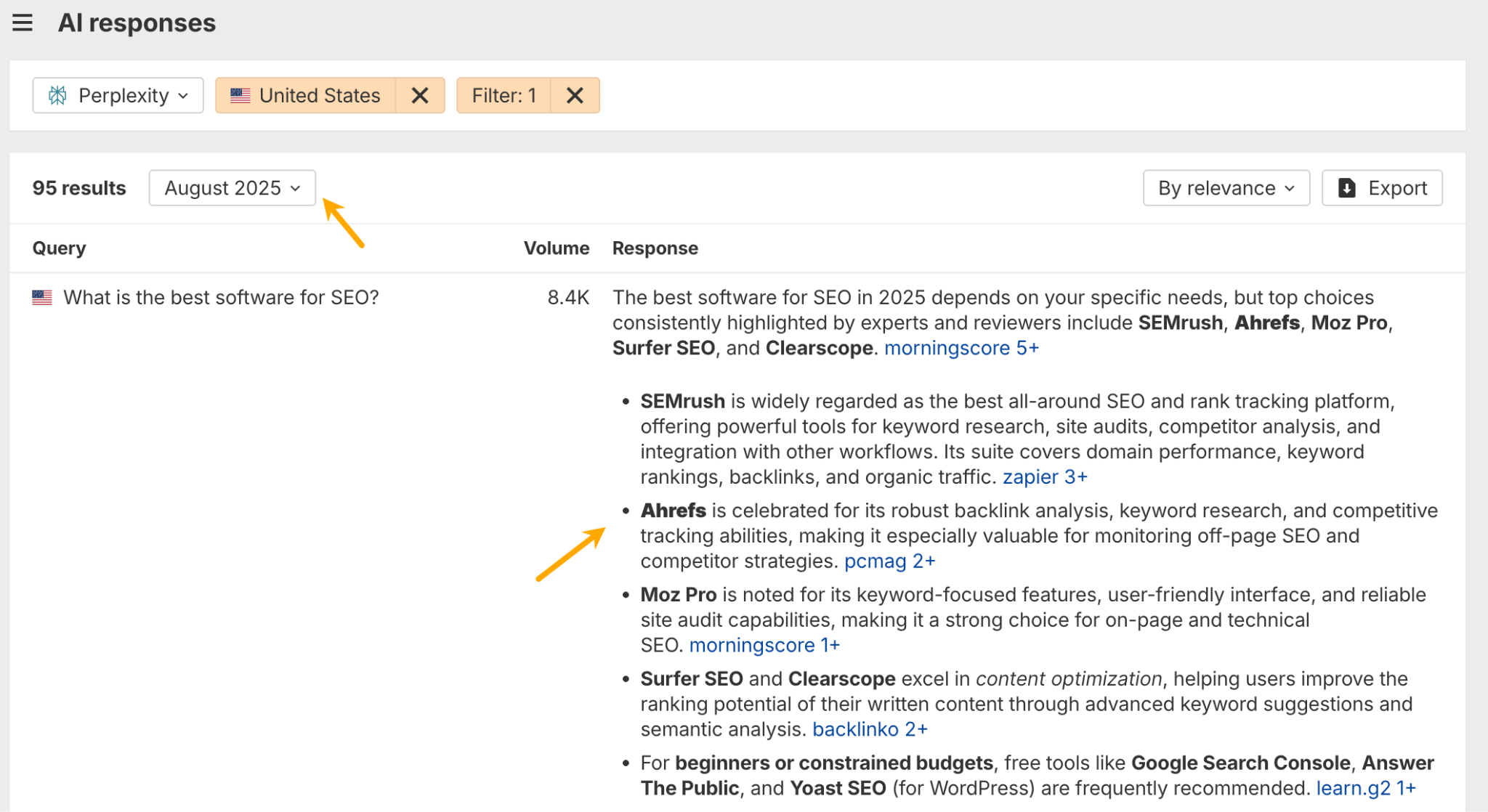
To sum up:
| Aspect | Traditional brand monitoring (social media/forums) | AI brand mention monitoring |
|---|---|---|
| Owner | Social media managers, community managers | Content marketing, brand marketing, or SEO teams |
| Frequency | 24/7 monitoring with real-time alerts | Weekly visibility checks, monthly strategic reviews |
| Purpose | Crisis prevention, customer service, engagement | Market positioning, content strategy, competitive intelligence |
| Response | Direct replies, immediate damage control | Strategic content creation, PR, influencer marketing |
| Mindset | Reactive firefighting | Proactive market research |
In the case of Brand Radar, that’s over 150M prompts in six AI indexes: AI Overviews, AI mode, ChatGPT, Perplexity, Copilot, and Gemini. Here’s how you can navigate that data.
Track the growth of brand mentions
You can track how your brand’s presence in AI changes over time, which makes it easier to see whether your marketing efforts are paying off.
It’s like measuring brand awareness, but within the AI space. You’ll notice spikes after a big campaign or product launch, and you’ll also be able to catch sudden drops that could point to an issue that needs attention.
In Brand Radar, simply enter your brand name along with any common variations, and you’ll know the number of mentions and their change in time right away.
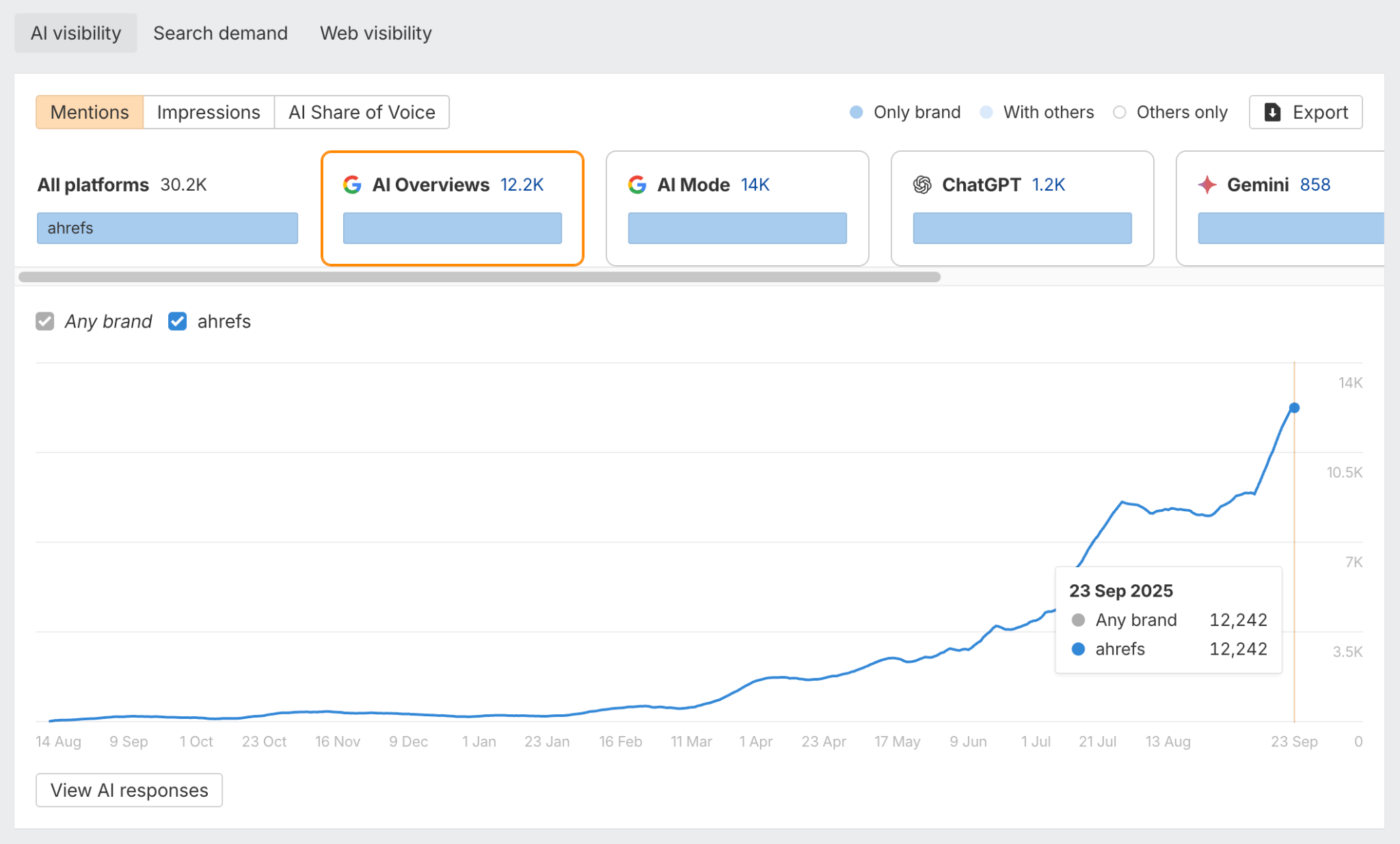
See what topics AI tools associate with your brand
You can see which problems or topics naturally prompt AI systems to mention your brand. For example, your company might come up often in conversations about “sustainable packaging,” but be missing from discussions about “budget-friendly alternatives” where you’d want to appear. Insights like these show you where to focus your content strategy.
To get this data, open the Topics report on the right-hand side.
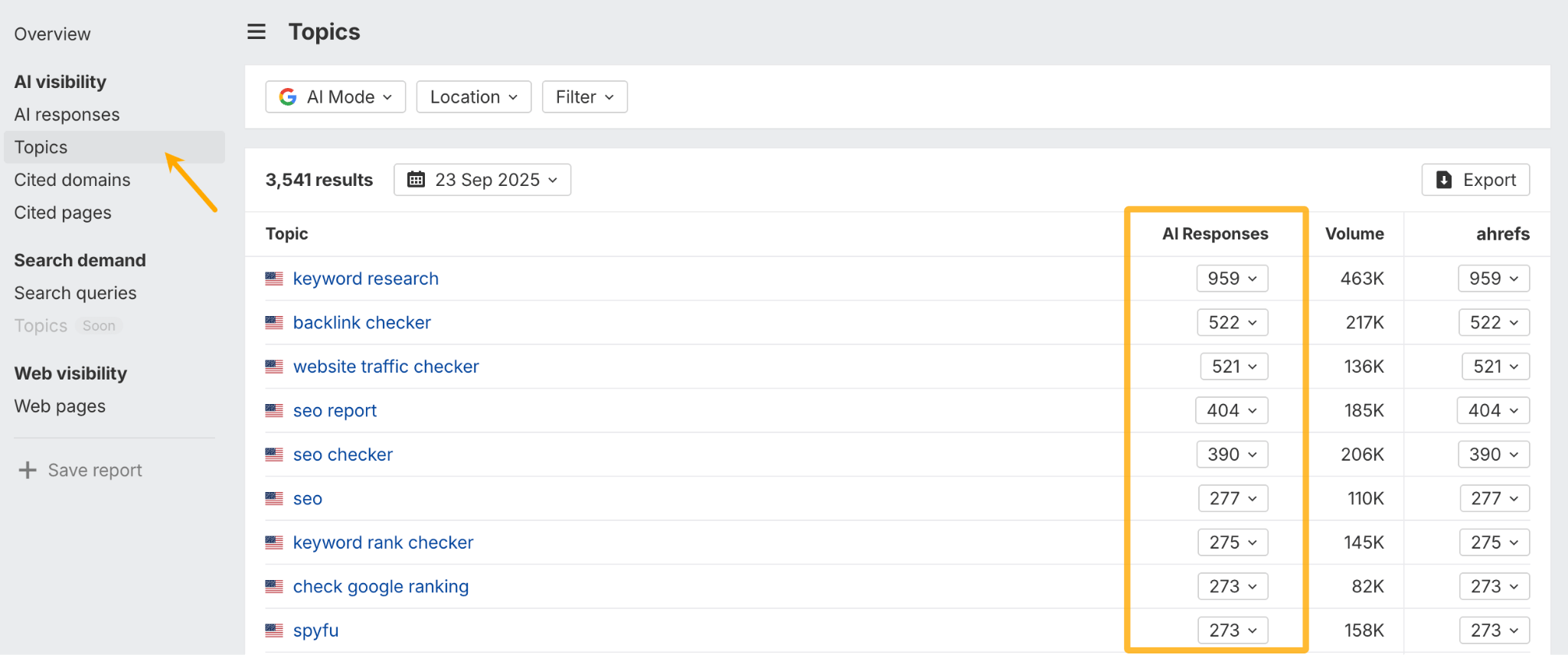
See how closely AI connects your brand to a topic or product category
If your brand spans multiple product categories, it’s important to track how often AI mentions you in each one.
For example, the Subaru car brand wants to be top-of-mind when it comes to SUVs and crossovers. If we put these categories next to their brand name in Brand Radar and add some competitors, we’ll see that they are slightly more often mentioned as the crossover brand.
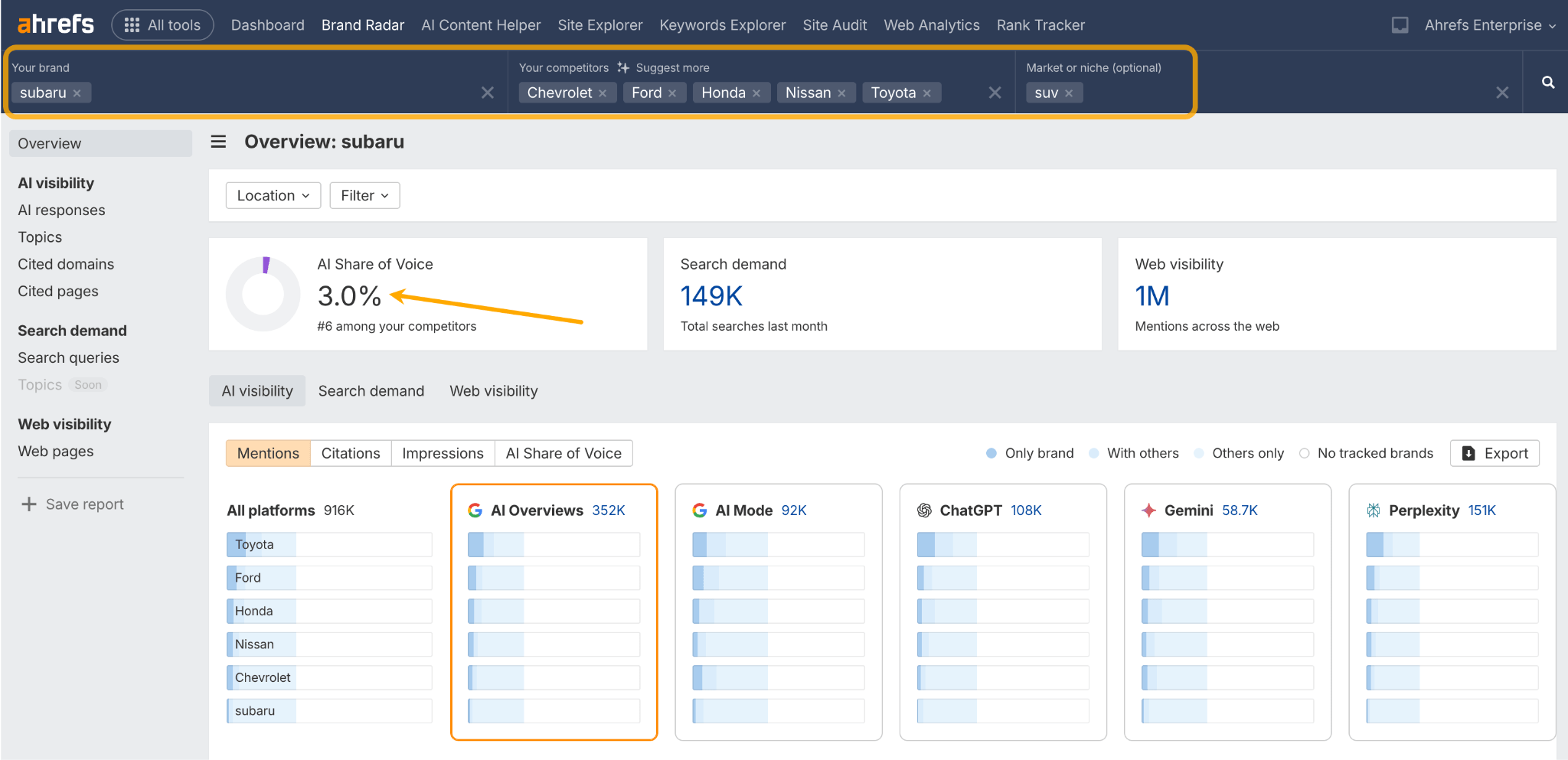
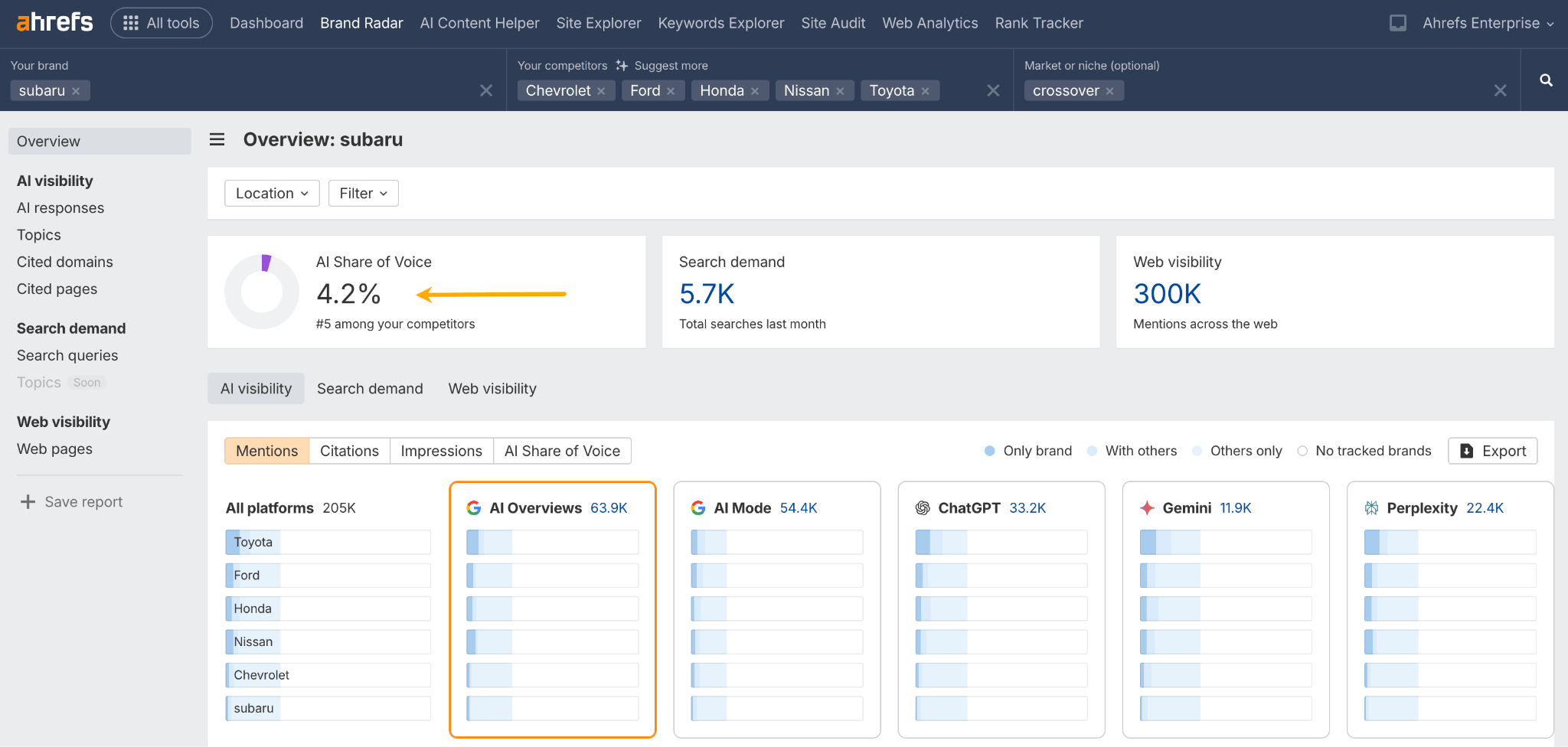
And right below the bar charts, we can see a graph showing how their AI visibility changed in time compared to competitors:

Find out what AI says about your brand (and step in when needed)
You can fact-check how AI describes your brand and catch mistakes before they spread.
Sometimes AI gets simple details wrong, like your founding date, main products, or even your prices, while still citing your pricing page. Here’s a fresh example of AI citing the wrong prices.
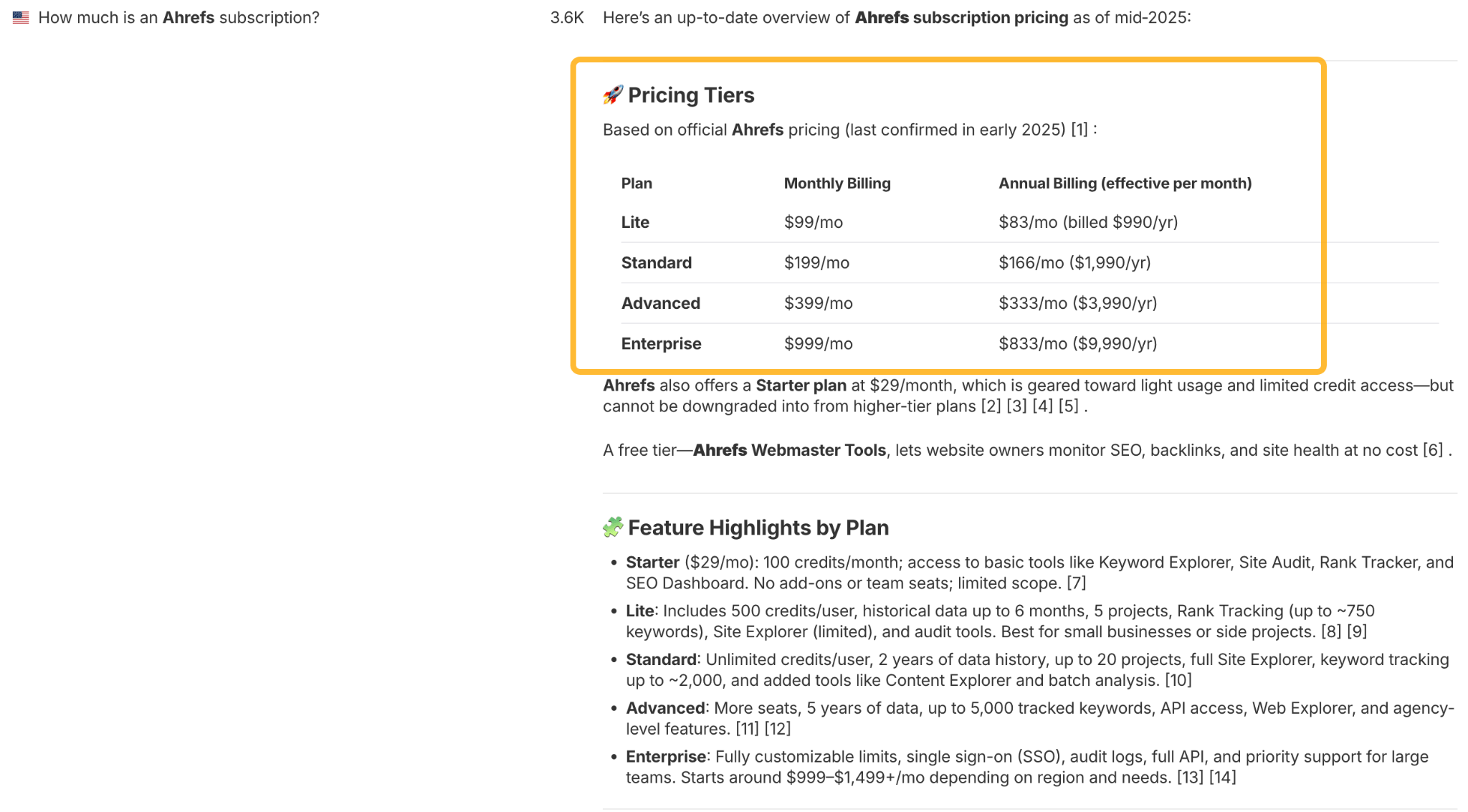
By spotting these errors, you get clear problems to work on, whether that means reaching out to the AI companies directly or creating content that sets the record straight.
In the AI responses report, enter your brand in the filters like so:
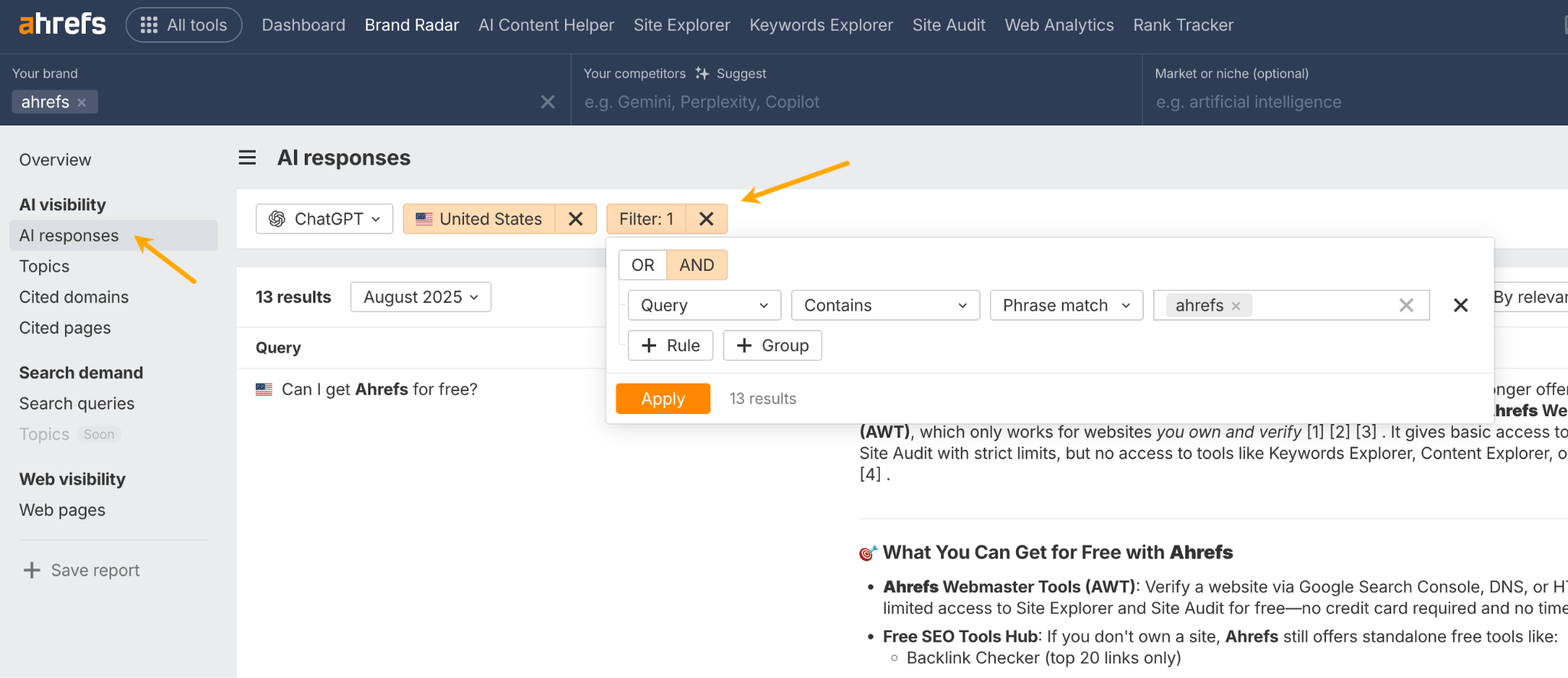
Measure and track your AI share of voice
Think of this as your slice of the AI conversation pie. You can see what percentage of AI mentions in your industry actually go to you versus your competitors. It’s especially useful for tracking progress over time—are you gaining ground or losing it?
Enter your brand and your competitors. Your overall AI share of voice is the number at the top.
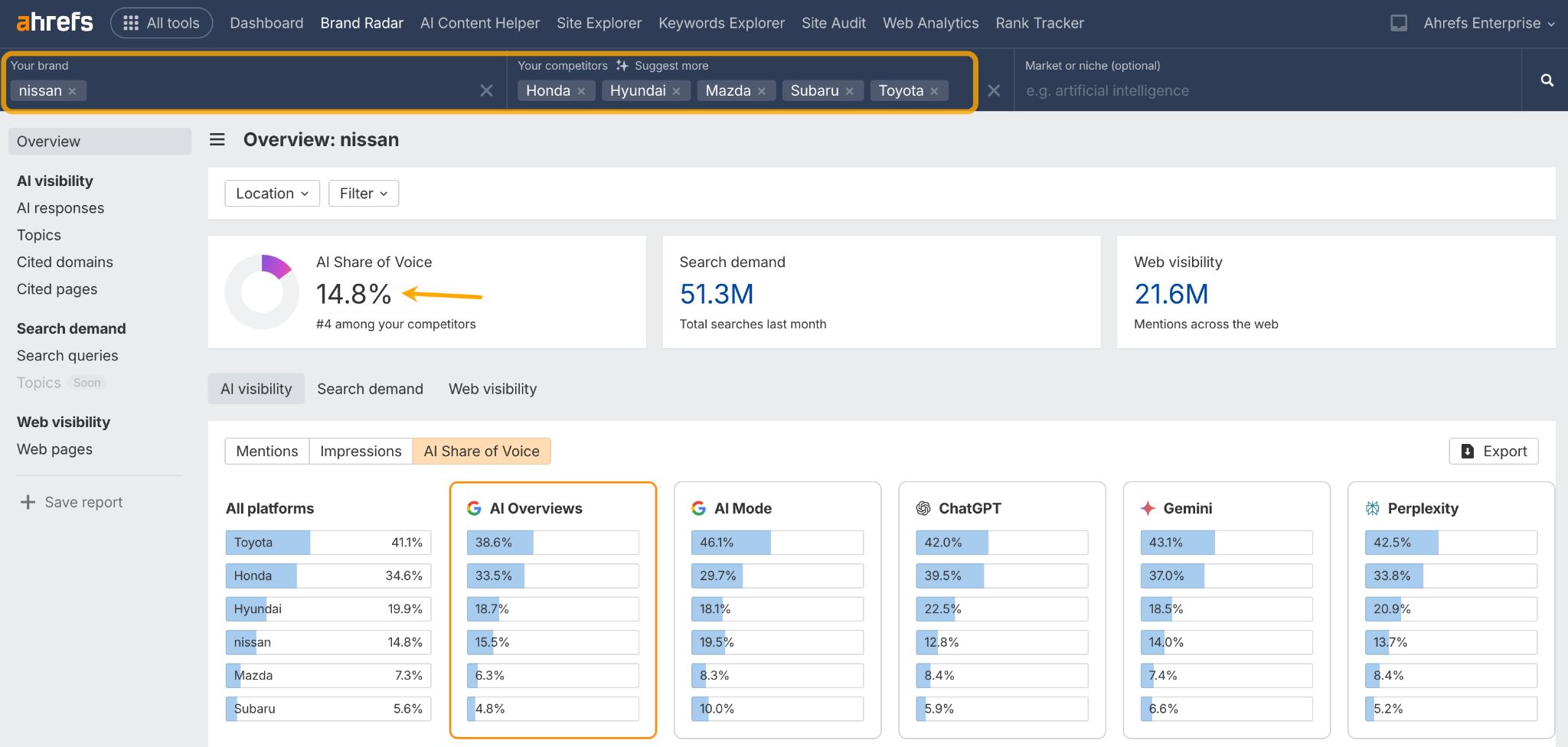
Below, you’ll get your share of voice in each of the six AI indexes.

Compare your AI visibility against competitors in specific topics
This goes deeper than the overall share of voice. You might find that your brand dominates AI mentions for “enterprise solutions” but barely shows up for “small business tools”, while a competitor has the opposite pattern.
Knowing your topic-specific strengths and gaps helps you refine your content strategy. For topics where you need to double down, you can secure more mentions on third-party sites (like product reviews) or create more of your own content (like how-to guides), or revise your own product marketing materials.
For example, when Monday.com launched its CRM feature, it was stepping into a bigger market with new competitors. Until then, the brand was mostly recognized for project management. Tracking their AI visibility showed how well they were breaking into this new space.
- Enter your brand and competitors.
- Go to the Topics report.
- Enter the topic in the Filter window.
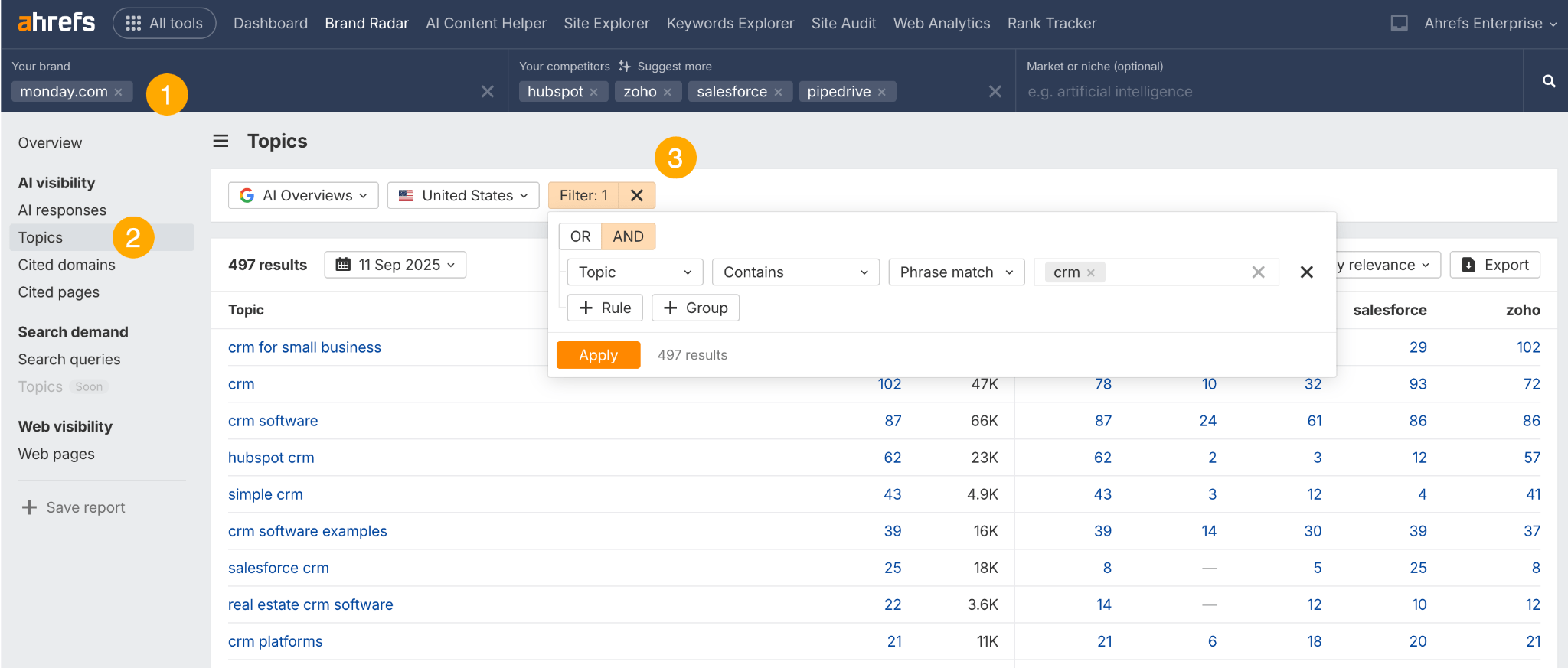
Identify brand mention gaps where competitors get mentioned, but you don’t
For example, AI might regularly recommend your competitors for “integration with Slack” or “GDPR compliance,” while your brand never appears, even though you offer those features too. These gaps are immediate opportunities to create new content, optimize existing pages, or adjust your messaging so your brand gets included in those AI conversations.
Here’s how to spot pages that talk about your competitors but don’t mention you—perfect opportunities to pitch your solution.
- Enter your brand and competitors.
- Hover on your brand in the mentions graph section and click on “Others only”.
- Go to the Cited pages report.
- Repeat for each AI index.
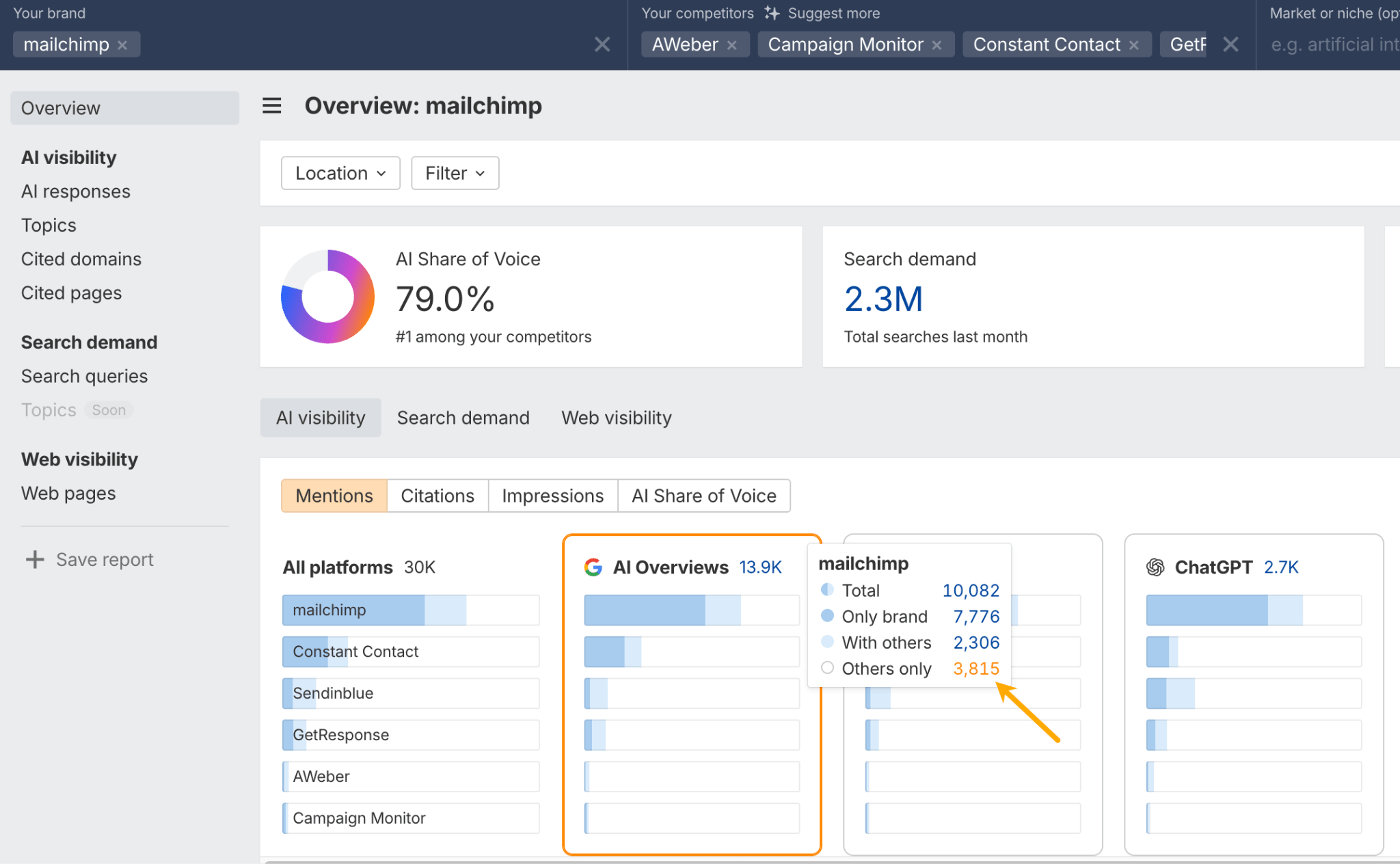
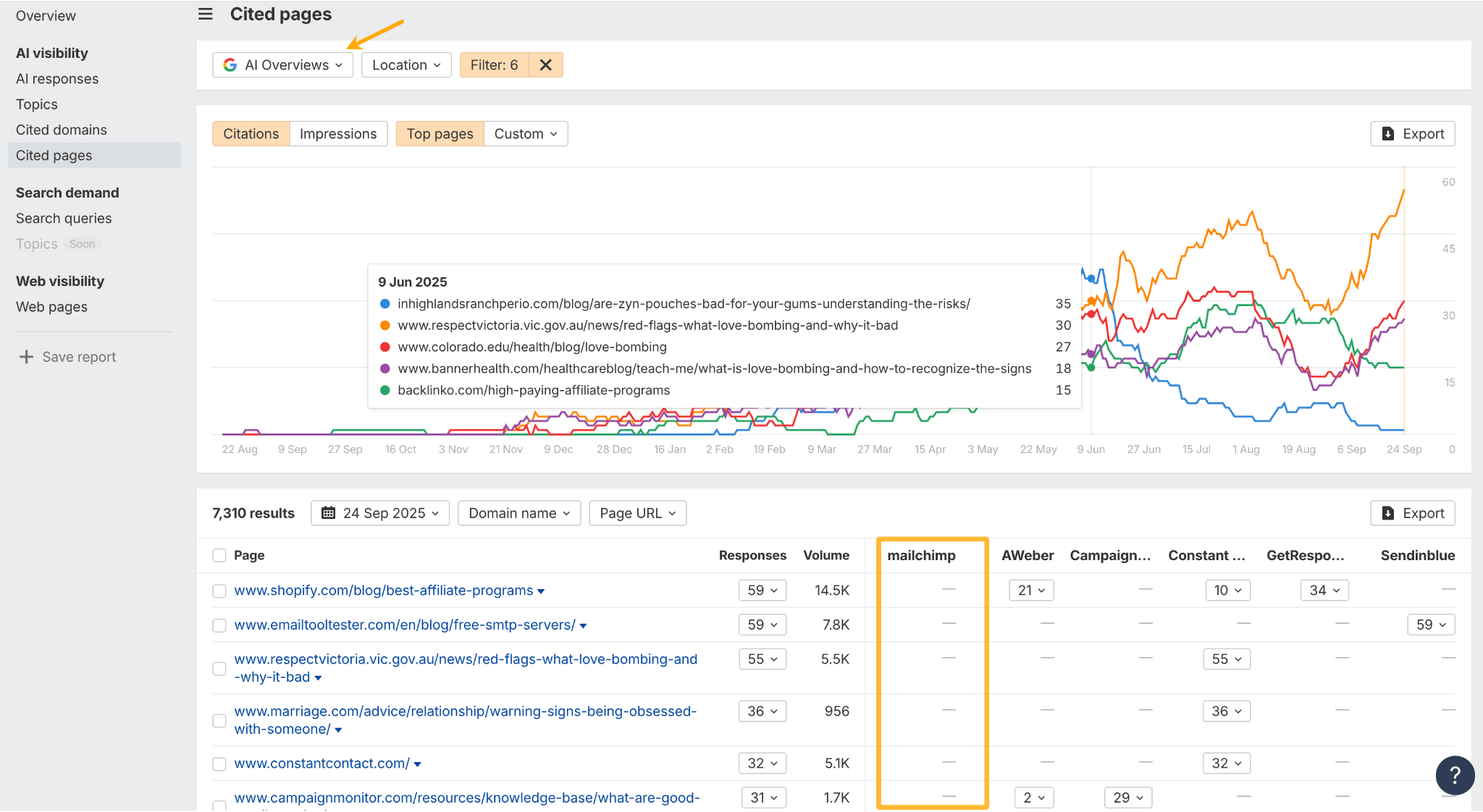
Tip
Brand Radar also tracks your search demand and web visibility.
It taps into one of the largest keyword databases in the industry (28.7B keywords) and uses a bot that crawls the web more frequently than any other marketing tool (learn more about Ahrefs’ data).
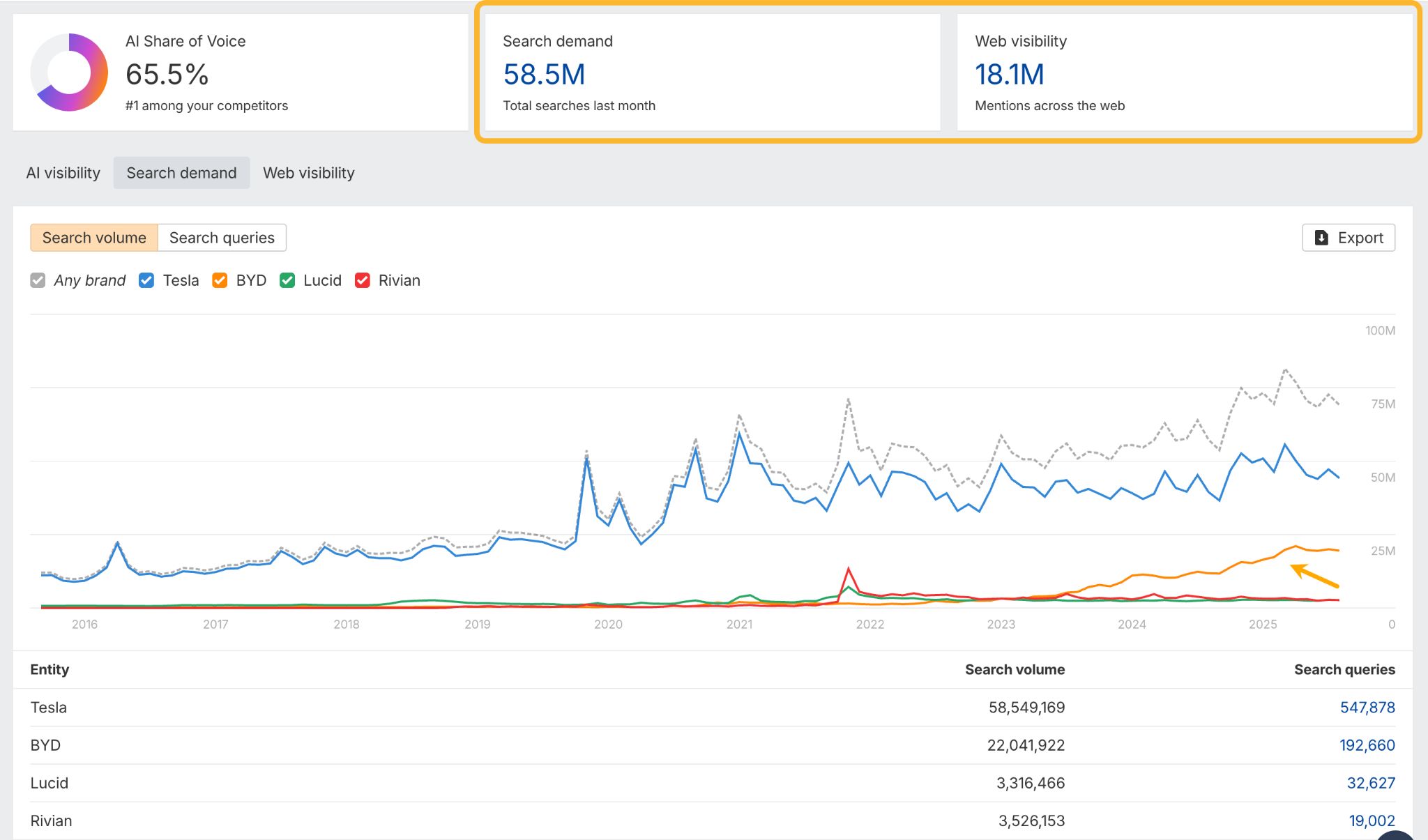
Search demand and web visibility tell you:
- How often people search for your brand.
- How many search queries include your brand—and whether that number is growing.
- How many pages mention your brand, and how much visibility those pages get.
By the way, your search performance and web mentions directly shape how AI systems understand and represent your brand. Strong search demand and brand mentions usually lead to better AI visibility as well. That means you can approach AI brand building from multiple angles—improving search rankings, earning credible mentions, and seeing both drive stronger AI representation of your brand.
Further reading
Manual AI monitoring (free but limited)
If you’re not ready for professional tools, start with manual checks. Spend some time each month asking different AI assistants questions related to your industry:
- “What are the best [your product category] tools?”
- “How do I choose between [your brand] and [competitor]?”
- “What should I know about [your industry] solutions?”
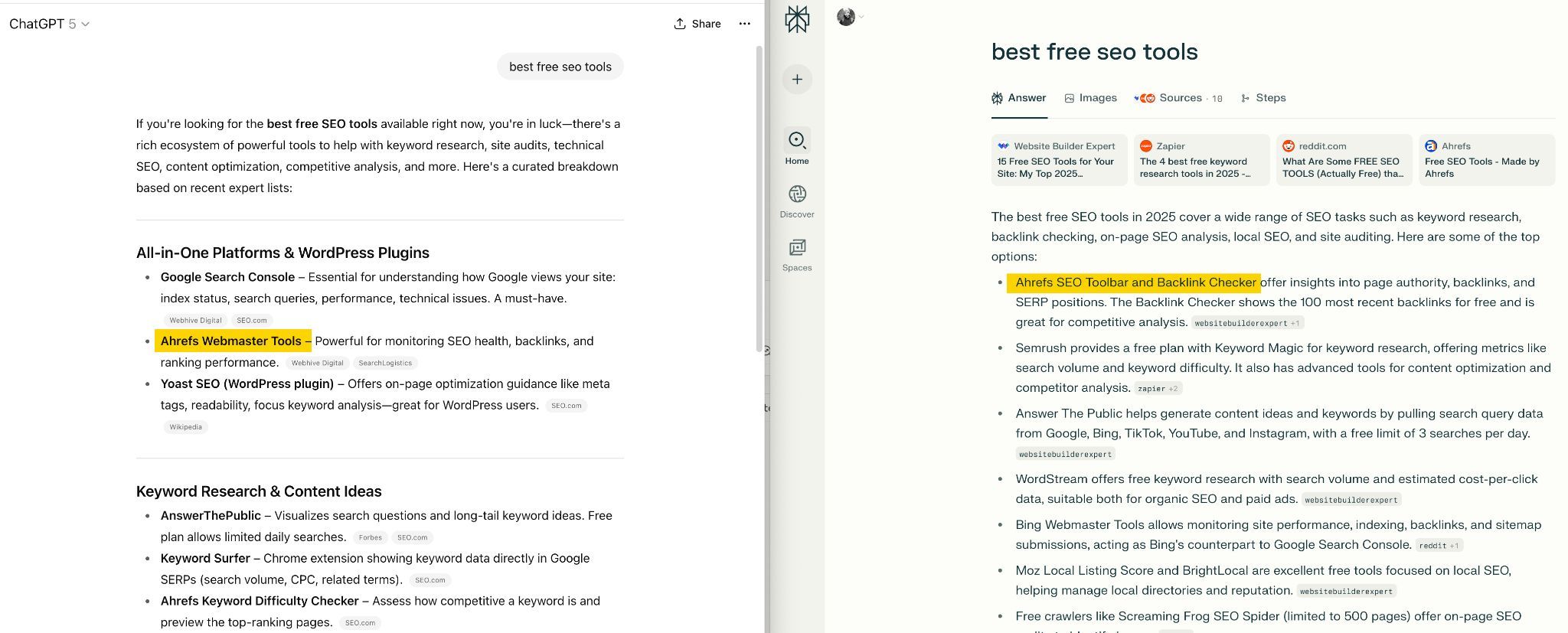
It’s a good idea to ask the same question a few times and see if you’re featured each time (take the average number, if not).
As you can imagine, this process is time-consuming, and you’ll still miss most AI mentions happening across thousands of daily conversations. But it can give you a basic sense of how AI currently represents your brand.
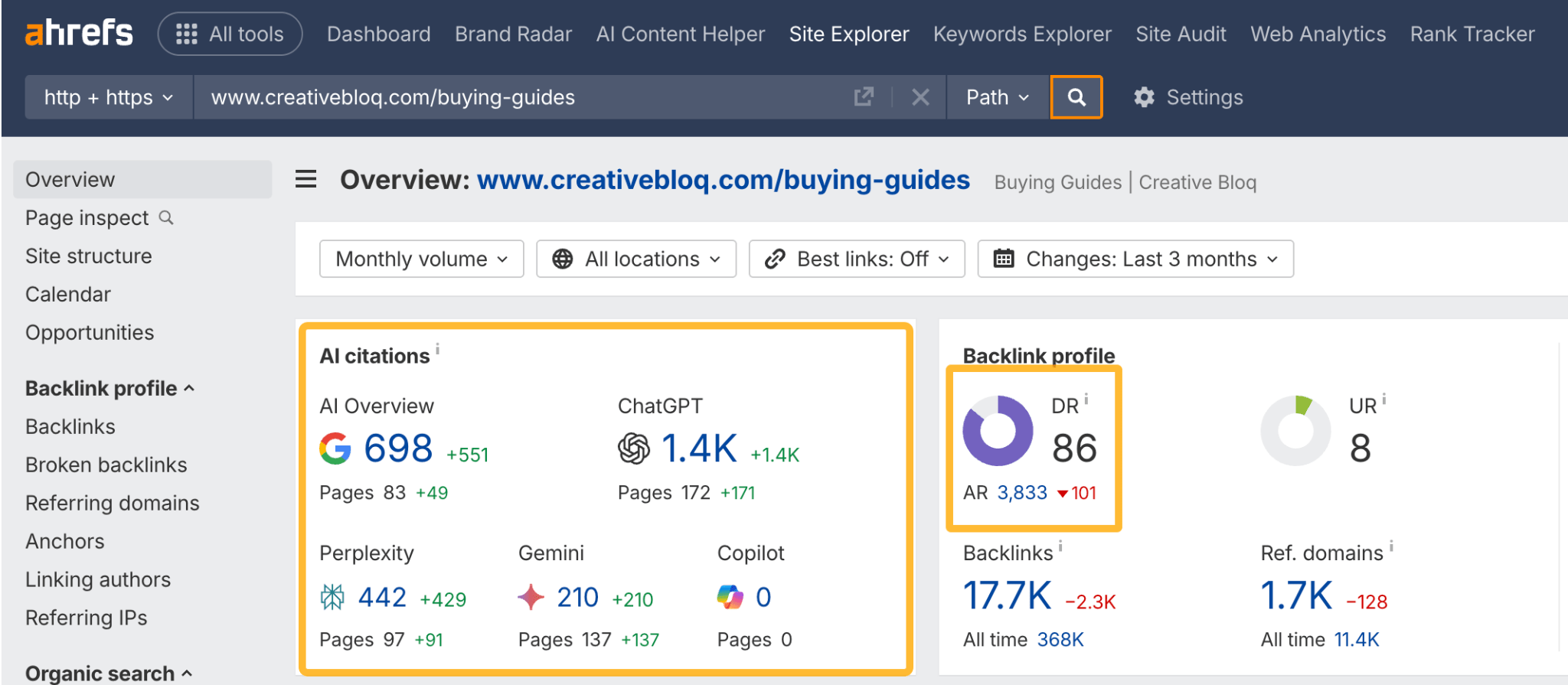
Further reading
3. Offer solutions via free tools and how-to guides
While analyzing Ahrefs’ AI visibility, I noticed a pattern: most mentions of our brand coming from our own content were tied to free tools and how-to guides. If you’re a tech company, especially SaaS, this approach could work for you too. It’s like in that earlier ChatGPT screenshot—when a tool is directly part of the solution to a problem, AI is likely to mention it.
Here are some of our free tools mentioned in AI Overviews:
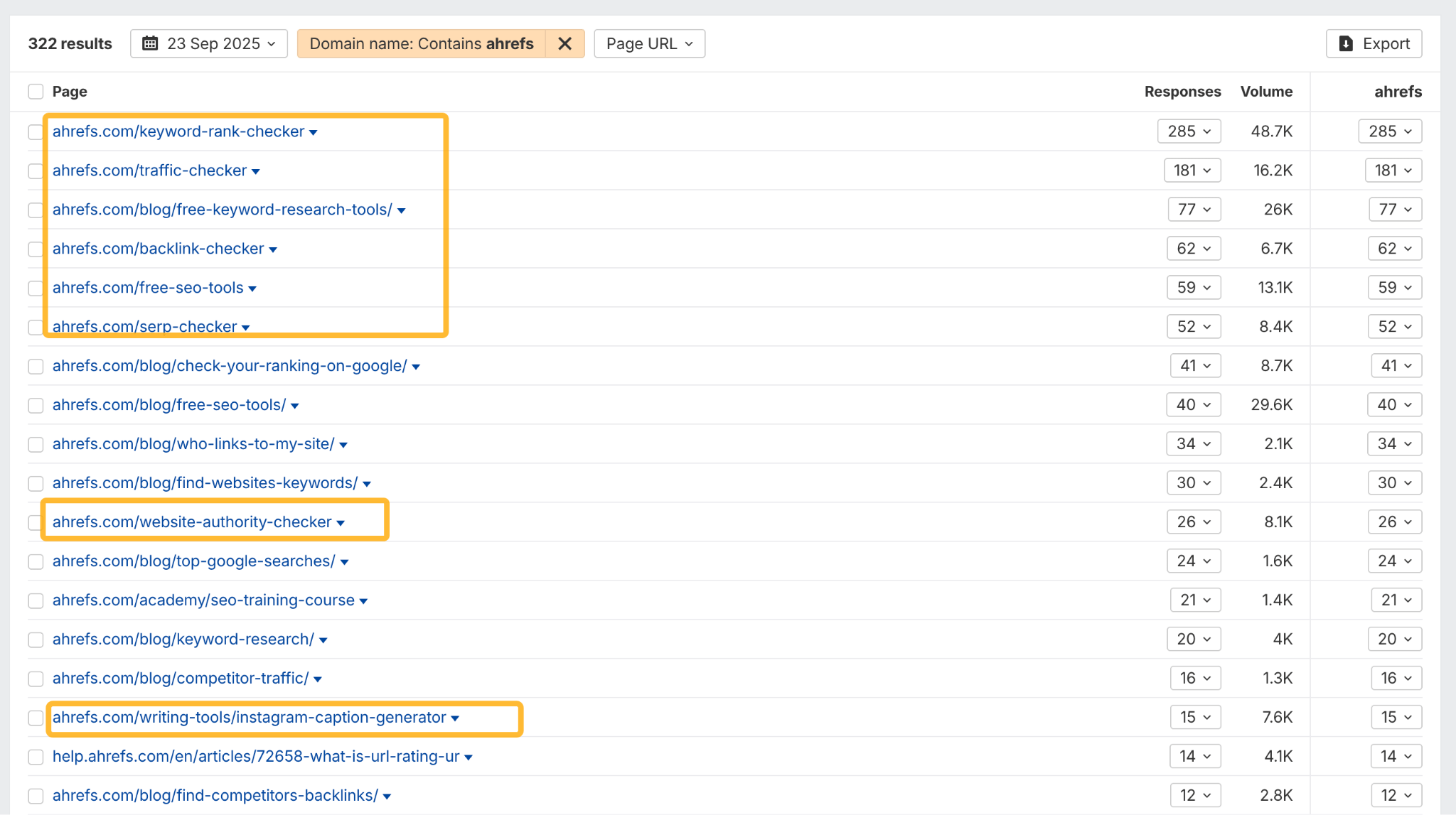
As for the how-to content, like how to do keyword research or check your competitor traffic, these appeared on 20 to 28 of the top 50 pages in AI Mode, AI Overviews, and Copilot in our case.
So, how do you find proven ideas for free tools and how-tos?
- Use a tool like Ahrefs’ Keywords Explorer to find relevant topics with strong search demand (here’s how).
- Analyze your competitors’ content in Site Explorer to see which topics bring both traffic and AI visibility.
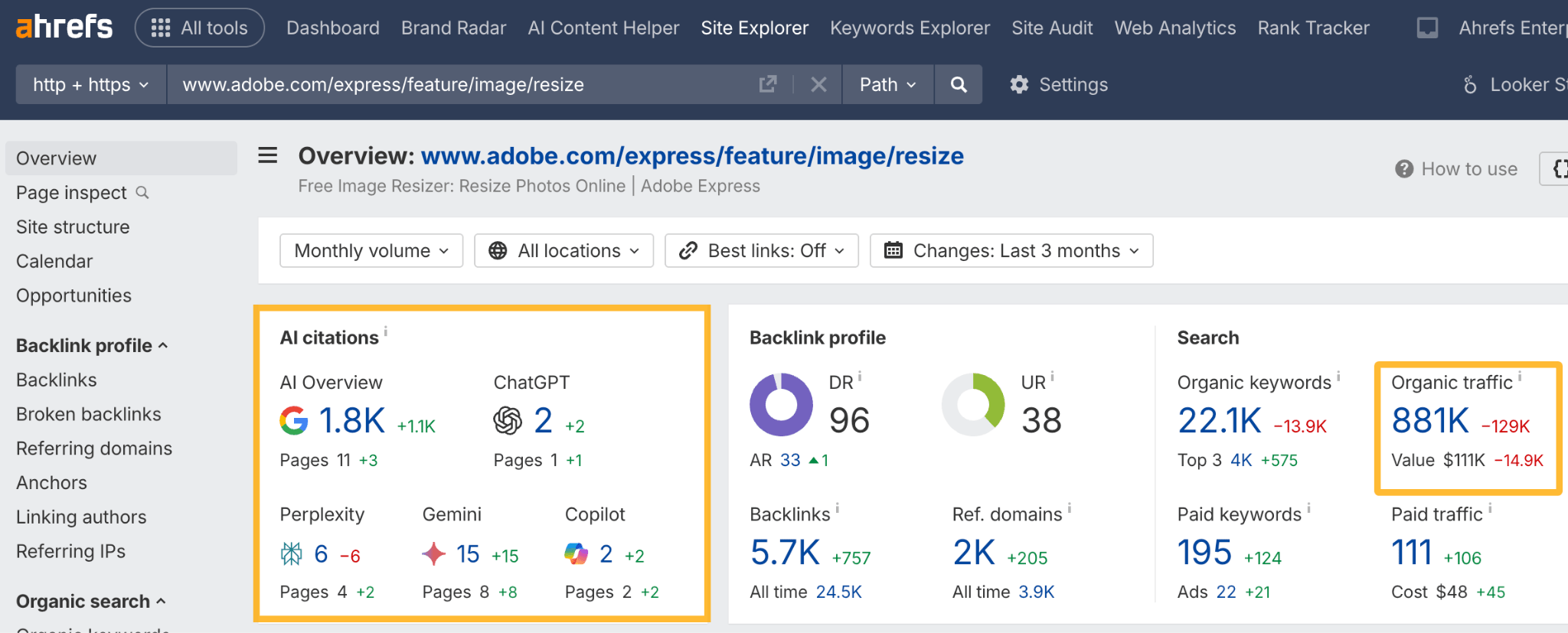
Tip
Don’t feel like you need to chase only the biggest topics with massive search demand. Not every niche has thousands of buyers waiting. If you see clear signs that your audience would truly benefit from a specific topic, it’s worth covering.
One unique thing about AI search is that people often use long, detailed prompts. These prompts are broken into numerous long-tail queries in a process called query fan-out. That means you can show up in front of the right people with very specific, targeted content.
4. Increase presence on YouTube, Reddit and Quora
This is a snapshot from Brand Radar showing the top-cited domains in all of the six AI indexes it tracks. YouTube, Reddit and Quora are in the top 5. It’s clear that AI strongly favors platforms built around user-generated content.

When we zoom in, we can find that these numbers vary based on the AI system. You’ll get high numbers across the board for YouTube and Reddit, whereas Quora will have a strong presence in Google’s AI Overviews, and far less in other platforms (compared to other AI assistants).
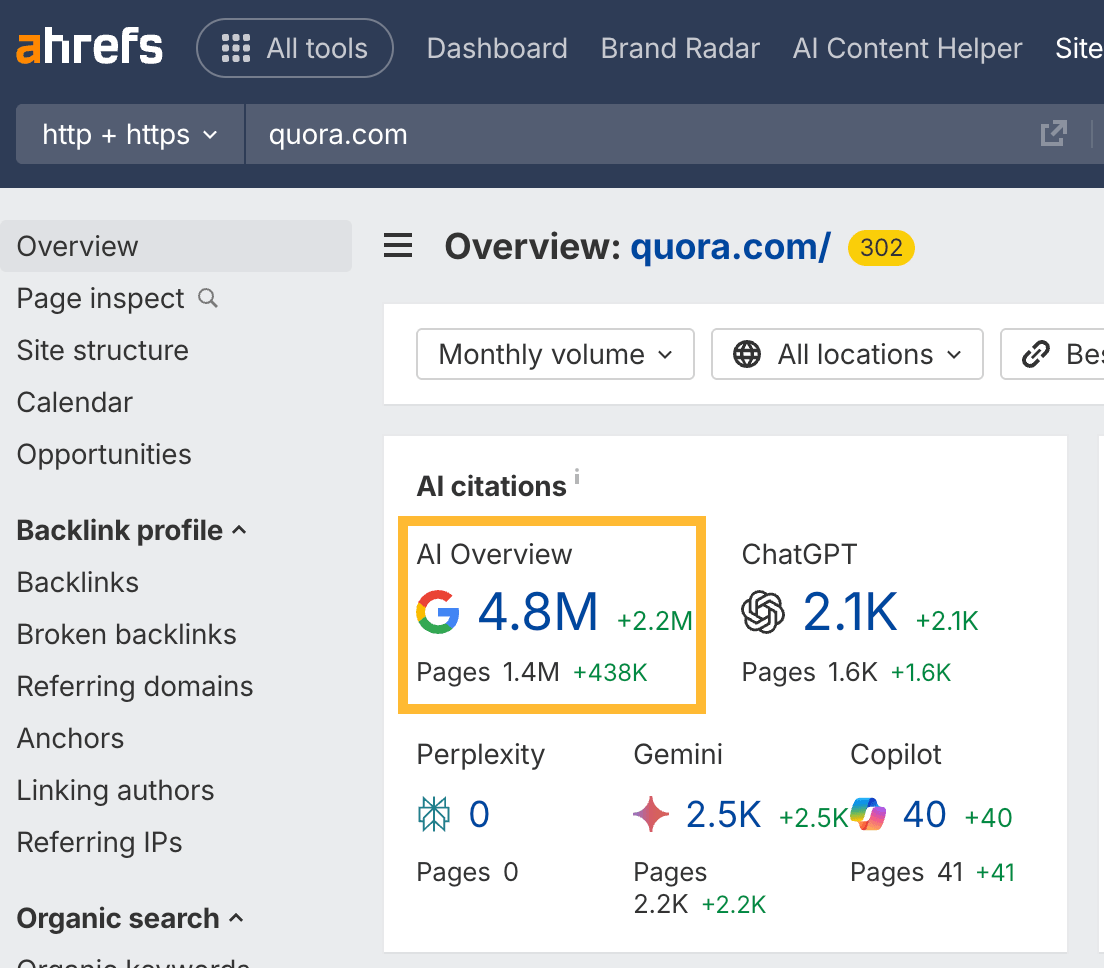
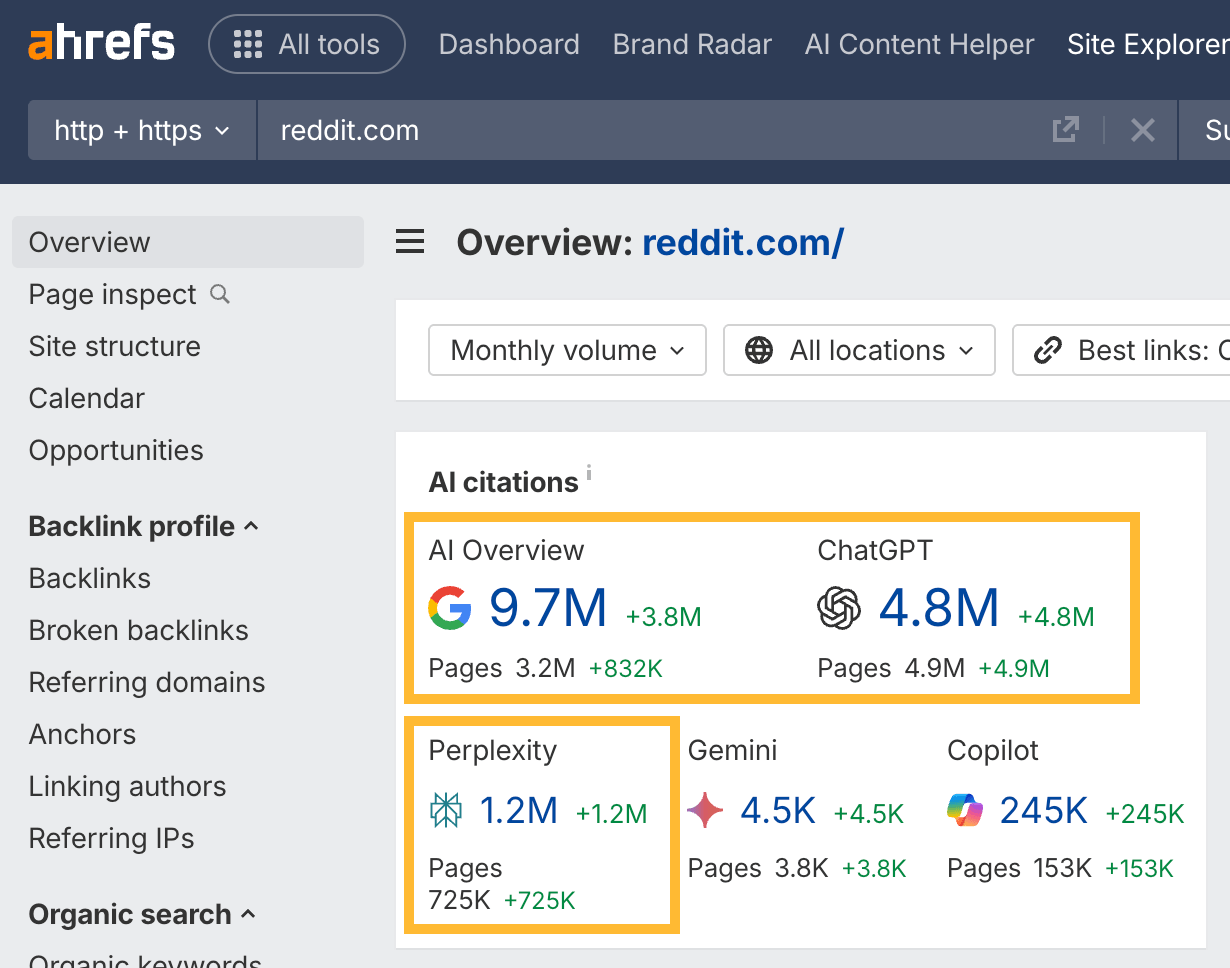
To save you hours of manually browsing these platforms for topics and threads, you can use a mention gap analysis to find places to increase your presence in one go.
- Enter your brand and competitors.
- Hover on your brand in the mentions graph section and click on “Others only”.
- Go to the Cited pages report.
- Set additional filters for each platform, like in the screenshot below.
- Repeat for each AI index.
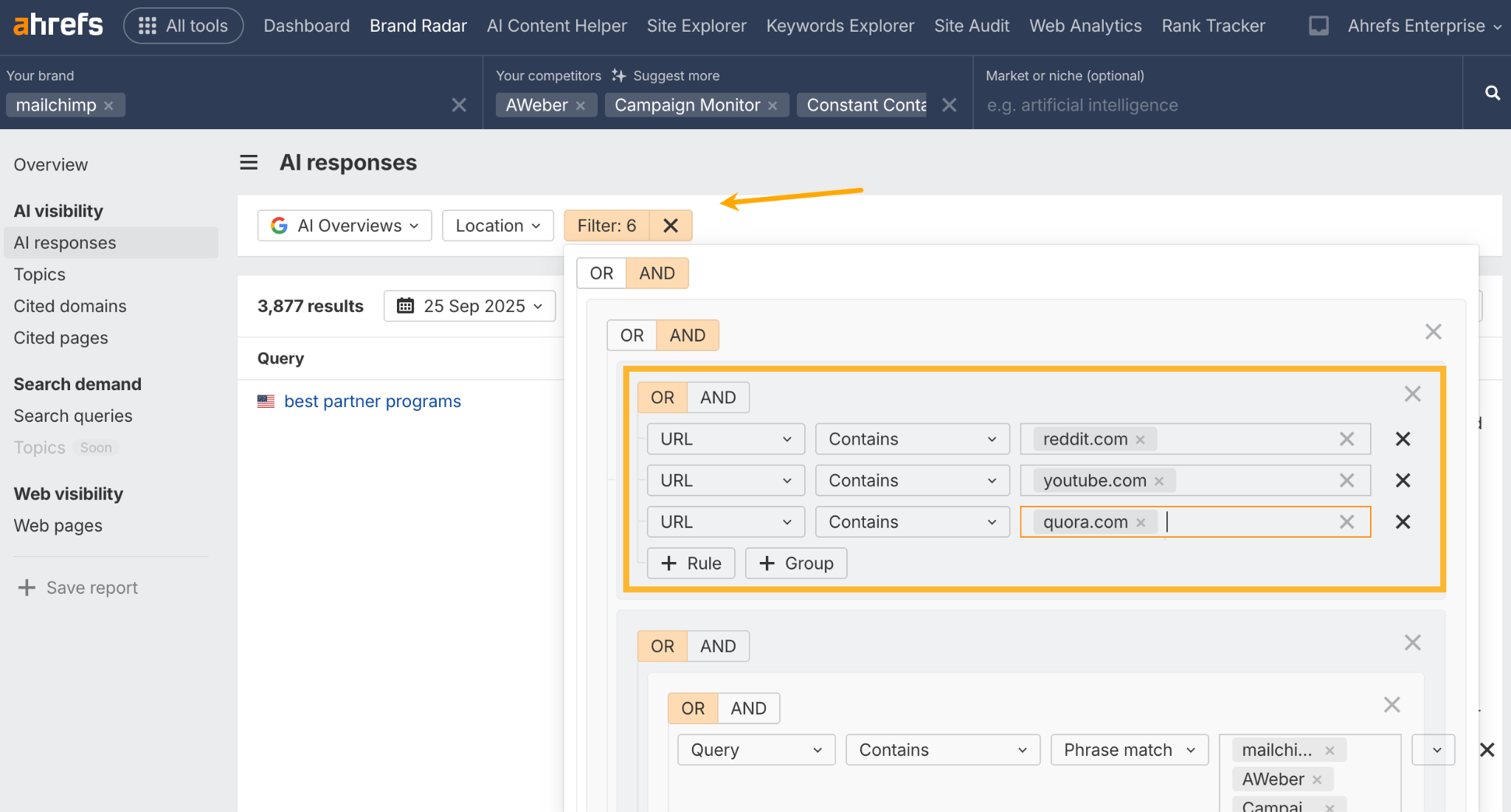
Additionally, for all three platforms, you can look for topics where they already rank in AI Overviews and make better content, or join the conversation; they don’t necessarily need to mention your competitors as long as they are relevant to your business.
- Go to Site Explorer and enter youtube.com, reddit.com, or quora.com as the target.
- Set SERP features filter to “Current include target in AI Overviews”.
- Set the keyword filter to “Contain [your topics]”.
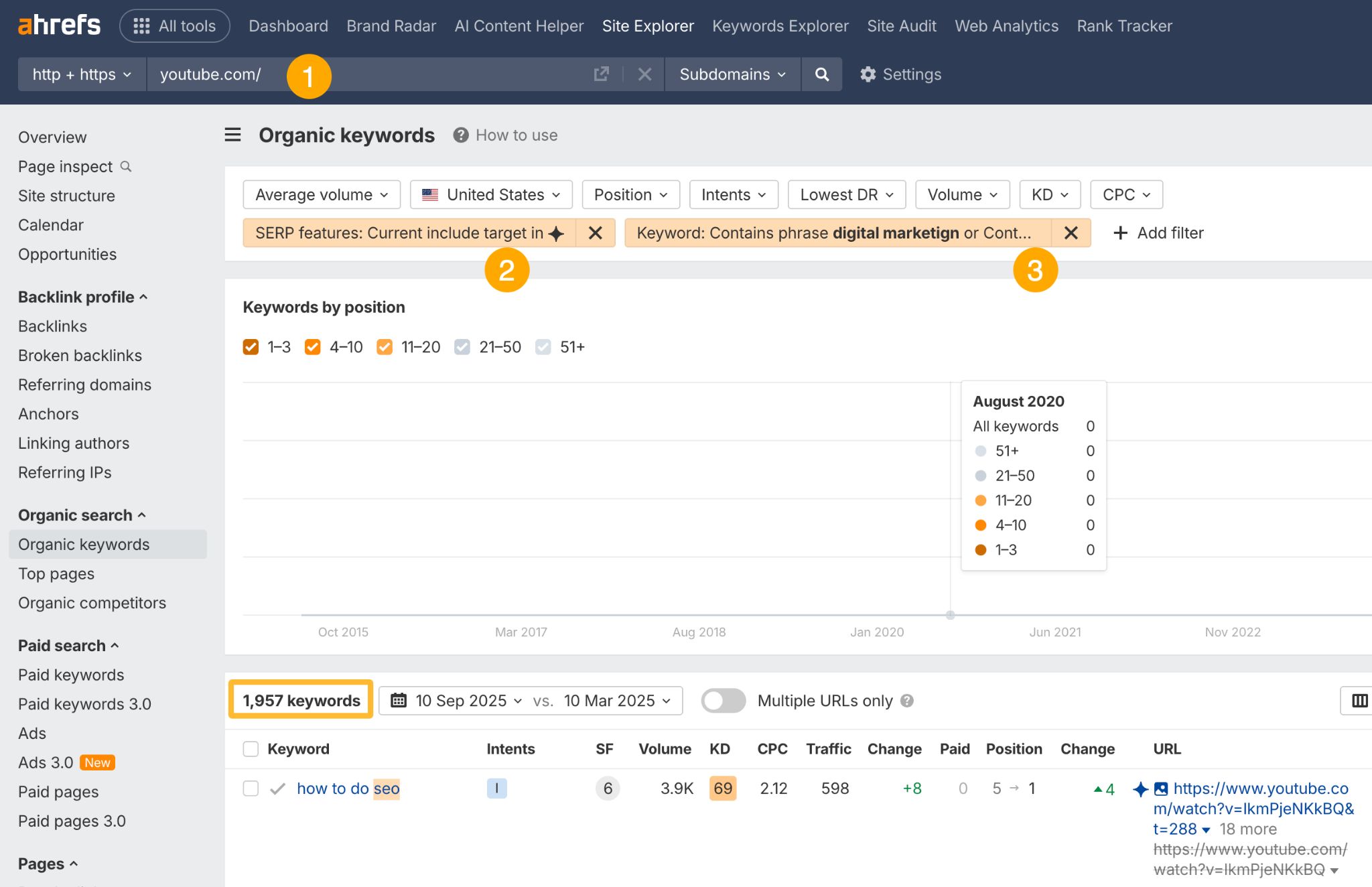
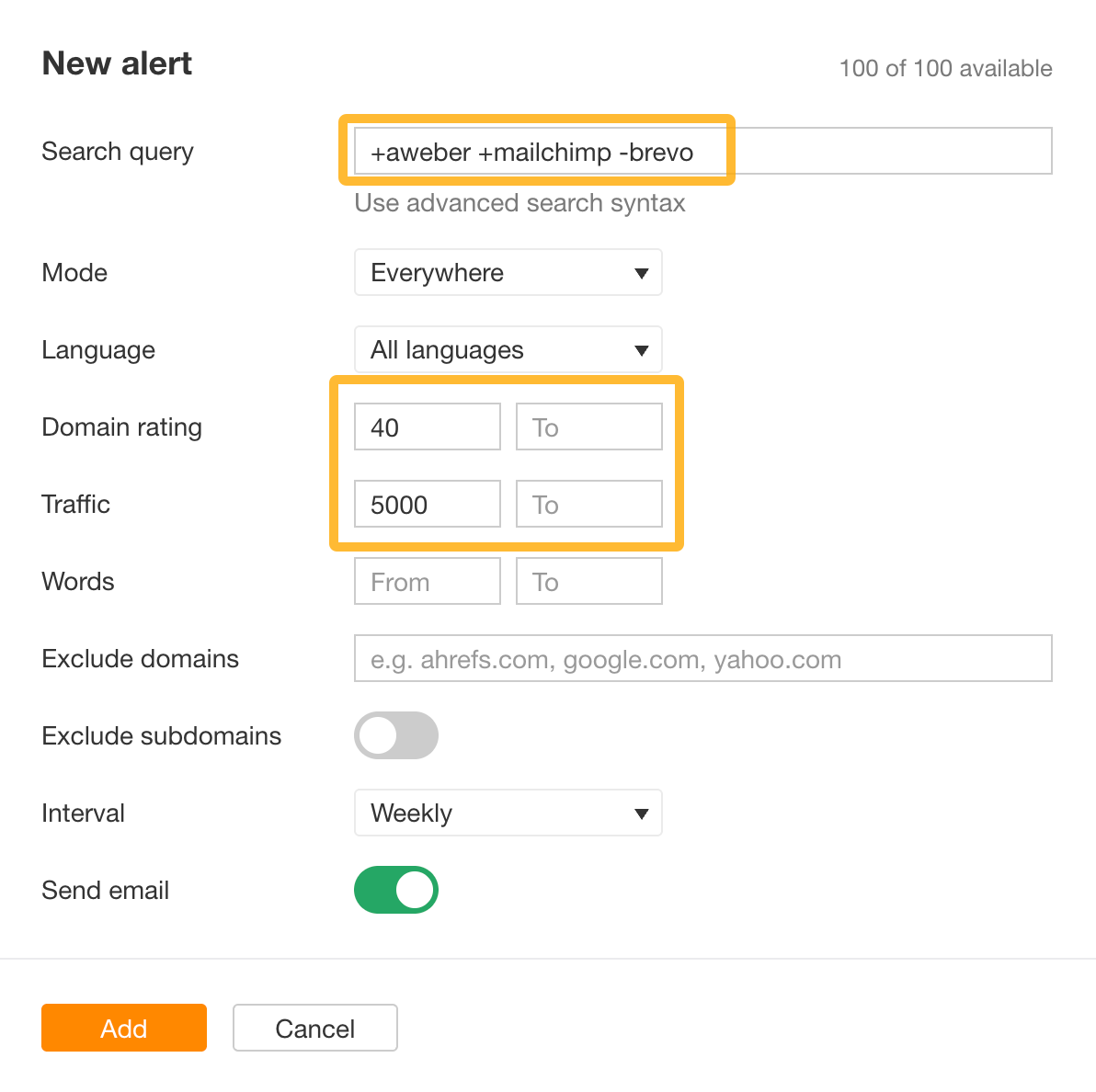
Final thoughts
What I’ve covered here is one piece of the broader AI visibility puzzle. If you want to go further, these two guides make a great next step. They show you how to move beyond brand mentions to actual content citations, boost your chances of being referenced by LLMs, and connect it all back to traditional SEO strategies.
Further reading
Got questions or comments? Let me know on LinkedIn.
Similar Posts
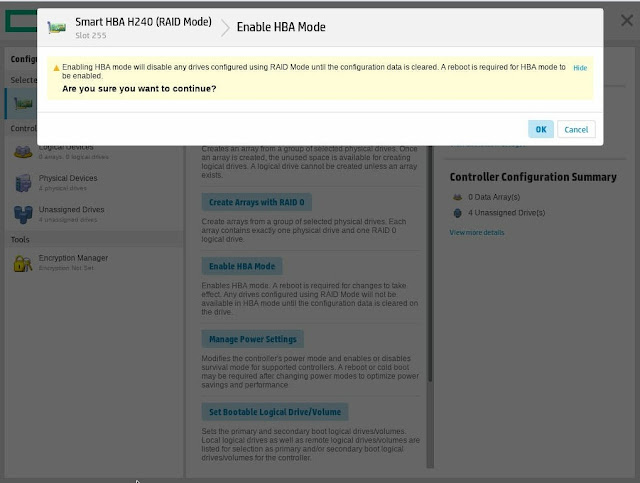
vSphere 7 Ate my HBA
My whitebox uses a Supermicro Motherboard that has an Intel c612 chipset for it’s SATA controllers….
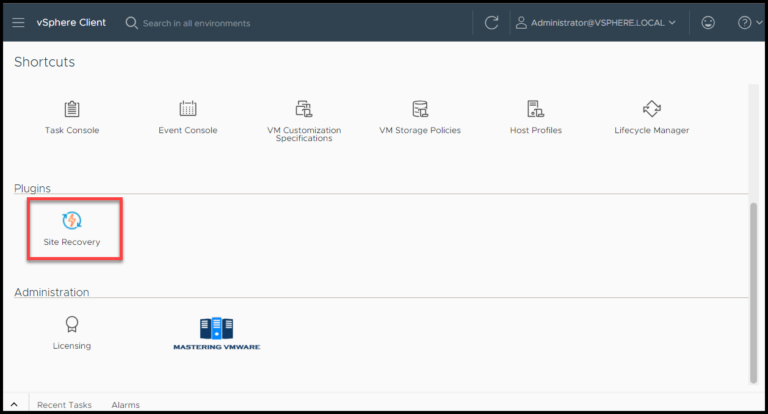
How to Access vSphere Replication 8
In this series of vSphere Replication Installation & Configuration, we have learned how to Install vSphere…
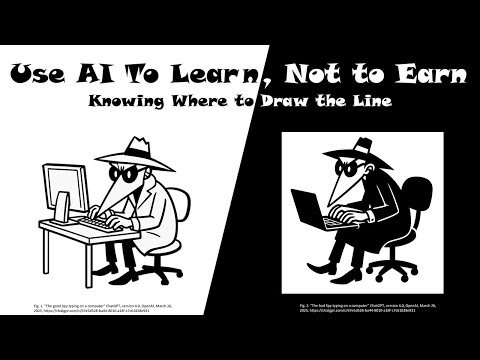
Use AI to Learn, Not to Earn !
Are you using AI to build your knowledge or just to earn a grade? This video…
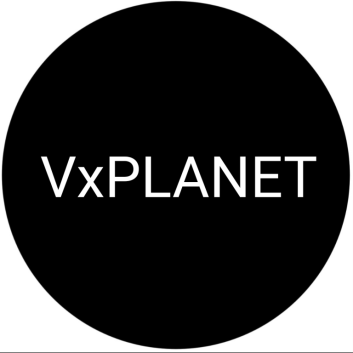
Cisco IT Blog Awards 2019 – Finalist
I am excited to announce that I have been chosen to be a finalist in the…
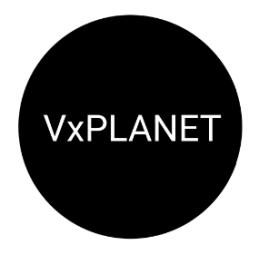
VMware Explore (VMworld) and how it has helped me over these years
I just registered for the biggest event of the year – VMware Explore 2022 US happening…
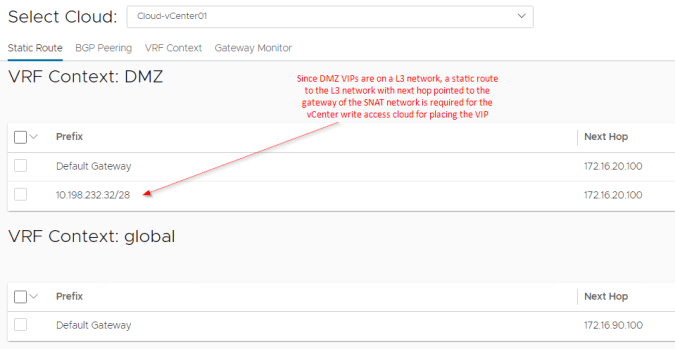
NSX ALB Cloud Migrator – Part 3 – Virtual Service Migration from No-Orchestrator Cloud to vCenter Cloud
In my previous Part 2 of the blog series on NSX ALB Cloud migrator, we discussed…